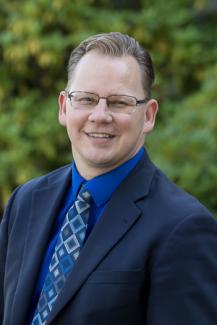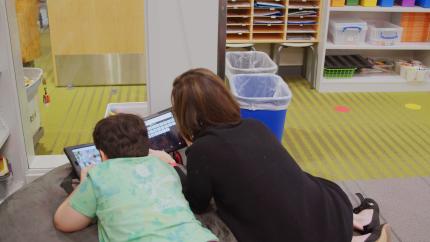Media Contact
Katy Payne she/her
360-764-0201
Recognizing the disproportionate amount of time that students with disabilities learned in classroom settings separate from their peers, in 2019, the Legislature funded a project to increase student access to inclusive education. Data show the project is making a difference.

OLYMPIA—February 7, 2024—In recent years, Washington state has engaged in coordinated efforts to expand access to inclusive education for all students. New data show that increasing numbers of students with disabilities are spending increasing amounts of time in general education classrooms, engaging in core instruction and learning alongside their peers who do not have disabilities.
Both federal and state laws require school districts to maximize instruction to students with disabilities in the least restrictive environment (LRE). This principle emphasizes their learning alongside peers without disabilities in general education classrooms. Decades of research consistently demonstrate that both students with and without disabilities benefit from being in the same general education classroom.
In the current school year, 65.1% of all Washington students with disabilities are served in general education settings for 80–100% of the school day—the highest tier of inclusion. This figure represents an increase of 1.7 percentage points as compared to last year and 8.5 percentage points since 2018, according to data from the Office of Superintendent of Public Instruction (OSPI).
“These gains are a testament to the coordinated, intentional efforts by our educators, school leaders, partners, and legislators,” said State Superintendent Chris Reykdal. “I am so proud of our state for the progress we have made in service to our students. Our Legislature has made significant investments to support students with disabilities; our educators are putting inclusive education into practice; and our students are seeing improved outcomes as a result.”
The data also show decreases in the percentages of students with disabilities served for shorter portions of the school day in general education classrooms. In the current school year, 22.6% of students with disabilities learn in general education classrooms for 40–79% of the school day, a decrease of 1.1 percentage points compared to last year. The percentage of students with disabilities served in general education classrooms for 0–39% of the school day also decreased, from 11.4% last year to 10.8% this school year.

In 2018, Washington state ranked 44 out of 50 states for inclusive practices in K–12 education. With an investment from the Legislature starting in 2019, OSPI launched the Inclusionary Practices Professional Development Project (IPP) to provide educators across the state with learning opportunities to engage in inclusionary practices.
The IPP was piloted in 100 school districts that, in 2018, had 44.2% of their students with disabilities in general education settings for 80–100% of the school day. In the current school year, that figure has increased to 64% at these school districts. This marks an increase of nearly 20 percentage points, meaning that nearly 22,000 Washington students with disabilities from the pilot sites have shifted into the highest tier of inclusion.
This progress has not been experienced at the same level for all student groups, however. Students with disabilities who identify as Black/African American are separated at higher rates than all other groups, with just 52.6% of these students accessing the highest tier of inclusion in the current school year.
In the 100 school districts piloting the IPP, that figure has increased from 47.8% in 2018 to 51.2% in the current school year. With an increase of less than 4 percentage points, the progress being made towards inclusive education for students with disabilities who identify as Black/African American is slower than the progress being made for students with disabilities as a whole.
To help address inequities, OSPI has collaborated with multiple partners across the state to develop the Inclusionary Practices Technical Assistance Network (IPTN). The network provides guidance, technical assistance, and professional learning resources to support schools in increasing access to inclusive education for all students with disabilities, with a targeted focus on students who identify as Black/African American and students served for longer periods of the day in separate, special education classrooms.
The Legislature allocated funding for the IPP through 2023. To continue the progress made on inclusionary practices, during the current legislative session, Superintendent Reykdal has asked the Legislature to provide continued funding to sustain the work of the IPP and the IPTN.
Superintendent Reykdal has also asked the Legislature to fully fund special education services, and the Legislature is currently considering House Bill 2180, sponsored by Rep. Lisa Callan, which would make progress in this area.
The full report on this year’s LRE data is being finalized and will be available in the coming months. When available, it will be published alongside data from previous years on OSPI’s Special Education Data Summaries webpage.






